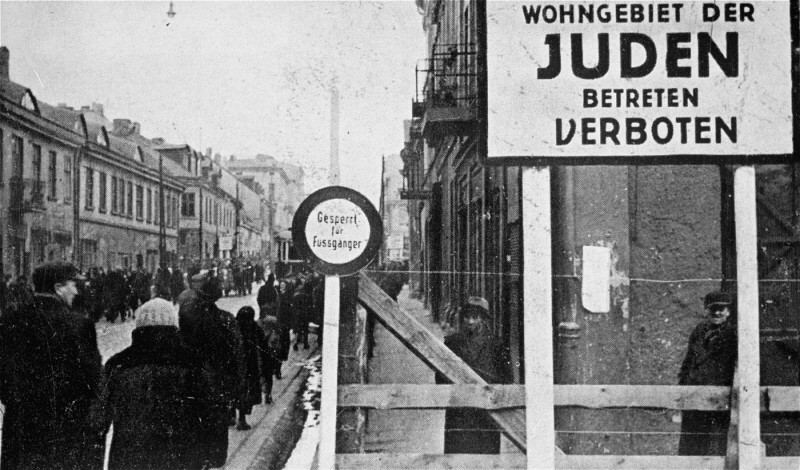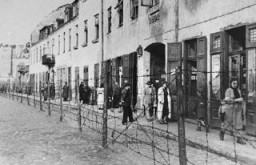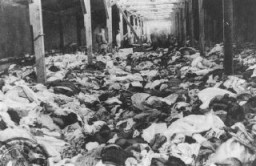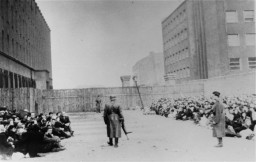
Ghettos in Occupied Poland
Ghettos in Poland Millions of Jews lived in eastern Europe. After Germany invaded Poland in 1939, more than two million Polish Jews came under German control. After Germany invaded the Soviet Union in June 1941, several million more Jews came under Nazi rule. The Germans aimed to control this sizable Jewish population by forcing Jews to reside in marked-off sections of towns and cities the Nazis called "ghettos" or "Jewish residential quarters." Altogether, the Germans created at least 1,000 ghettos in occupied territories. The largest ghetto was in Warsaw, the Polish capital, where almost half a million Jews were confined.
Many ghettos were set up in cities and towns where Jews were already concentrated. Jews as well as some Roma (Gypsies) were also brought to ghettos from surrounding regions and from western Europe. Between October and December 1941, thousands of German and Austrian Jews were transported to ghettos in eastern Europe. The Germans usually marked off the oldest, most run-down sections of cities for the ghettos. They sometimes had to evict non-Jewish residents from the buildings to make room for Jewish families. Many of the ghettos were enclosed by barbed-wire fences or walls, with entrances guarded by local and German police and SS members. During curfew hours at night the residents were forced to stay inside their apartments.
In the Polish cities of Lodz and Warsaw, trolley lines ran through the middle of the ghetto. Rather than reroute the lines, workers fenced them off, and policemen guarded the area to keep the Jews from escaping on the trolley cars. The passengers from outside the ghetto used the cars to get to work on weekdays, and some rode them on Sunday outings just to gawk and sneer at the ghetto prisoners.
Key Dates
October 12, 1940
Warsaw Jews ordered into a ghetto
The Germans announce the establishment of a ghetto in Warsaw. All Jewish residents of Warsaw are ordered into the designated area, which will be sealed off from the rest of the city in November 1940. Construction of a wall, more than 10 feet high and topped with barbed wire, begins. The Germans guard the ghetto boundary closely to prevent movement between the ghetto and the rest of Warsaw. The Warsaw ghetto is the largest of the ghettos in both area and population. More than 350,000 Jews—about 30 percent of the city's population—are confined in about 2.4 percent of the city's total area.
July 22, 1942
Warsaw Jews deported to Treblinka killing center
Between July 22 and mid-September 1942, over 300,000 people are deported from the Warsaw ghetto: more than 250,000 of them are deported to the Treblinka killing center. Deportees are forced to the Umschlagplatz (deportation point), which is connected to the Warsaw-Malkinia rail line. They are crowded into freight cars and most are deported, via Malkinia, to Treblinka. The overwhelming majority of the deportees are killed upon arrival in Treblinka. In September, at the end of the 1942 mass deportation, only about 55,000 Jews remain in the ghetto.
April 19, 1943
Jewish fighters resist Germans in the Warsaw ghetto
The Germans decide to eliminate the Warsaw ghetto and announce new deportations in April 1943. The renewal of deportations is the signal for an armed uprising within the ghetto. Most people in the ghetto refuse to report for deportation. Many hide from the Germans in previously prepared bunkers and shelters. Jewish fighters battle the Germans in the streets and from the hidden bunkers. The Germans set fire to the ghetto to force the population into the open, reducing the ghetto area to rubble. On May 16, 1943, the battle is over. Thousands have been killed and most of the ghetto population is deported to forced-labor camps. The Warsaw ghetto uprising was the largest and most important Jewish uprising, and the first urban uprising in German-occupied Europe.







